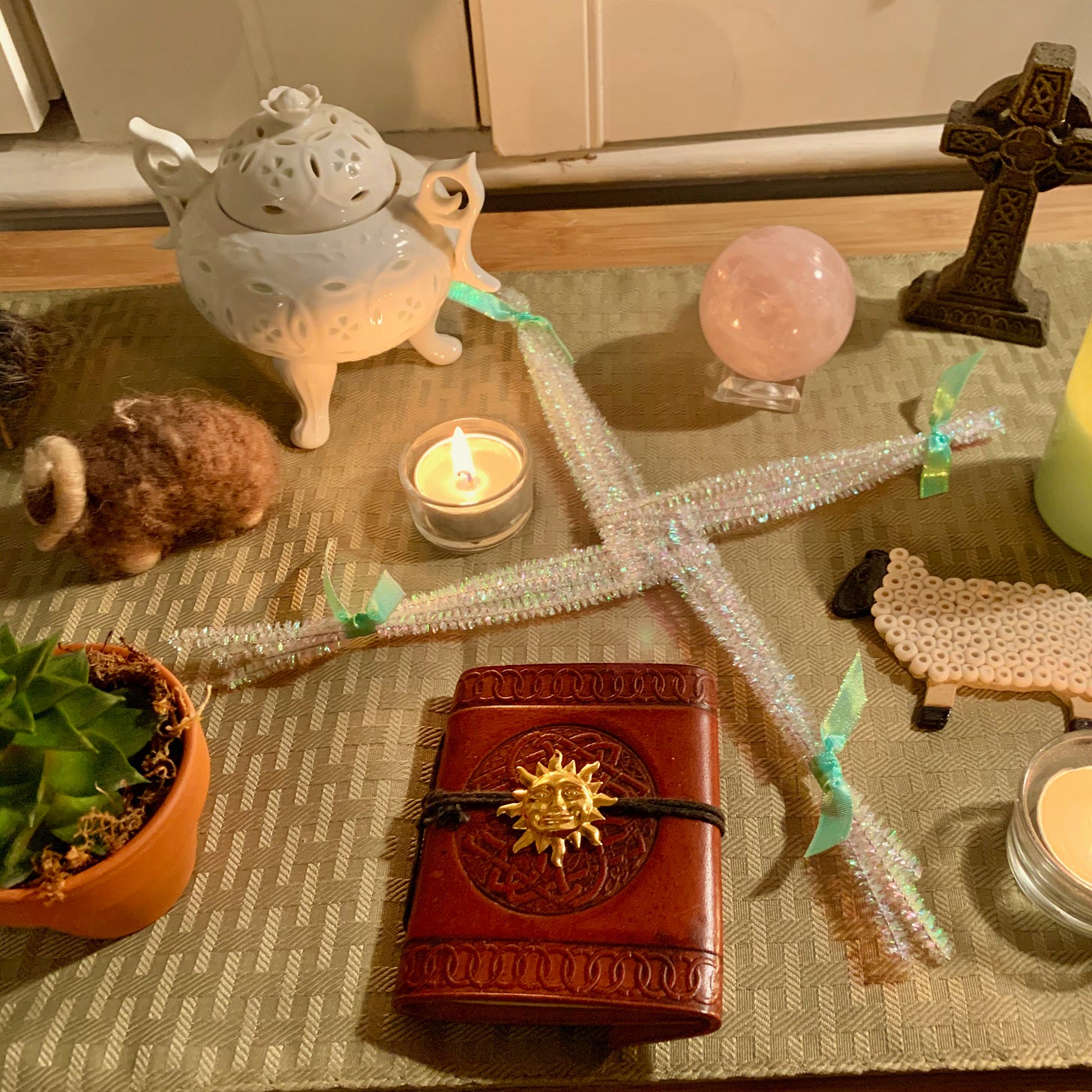In this second installment of our Wheel of the Year series—the first being Yule—we explore the Pagan festival of Imbolc, which is celebrated this year on February 1.
Marking a halfway point between the winter solstice and the spring equinox, Imbolc means “in the belly" in Old Gaelic. Coming from an ancient agrarian culture, this refers to lambing season as well as to the seeds lying dormant in the earth. So it’s not yet spring, but the hint of spring. And especially in dark times, the hope of spring is something to celebrate.

Brigid’s Day
The Celtic goddess Brigid is celebrated at Imbolc, a holiday later blended with the Catholic feastday of Saint Brigid of Kildare, also observed on February 1. As a result, the mythology around Goddess/Saint Brigid is braided together, thoroughly entwined. So much so that the saint’s canonization was revoked by the Pope in 1969, along with 93 others for whom “insufficient documentation” was found—that is, Saint Brigid might just have mythical origins. (The irony!)
The lore of each has grown to encompass many realms: she is known as the goddess or patroness of poetry, smithcraft, fertility, and healing. The Goddess Brigid is associated with fire—an element of destruction and creation in metalwork—and is said to wear a cloak made of sunbeams. She is also symbolized as a swan, representing renewal and transformation.
Saint Brigid is often depicted with a cow and the Goddess is associated with milk—representing sacred nourishment to help endure the remaining cold months until spring. The mythology of Brigid has come to embrace and even transcend duality.

The iconic Brigid’s cross is hung in homes as a symbol of protection—marked by the accompanying blessing:
May Brigid bless the house wherein you dwell
Bless every fireside every wall and door
Bless every heart that beats beneath its roof
Bless every hand that toils to bring it joy
Bless every foot that walks its portals through
May Brigid bless the house that shelters you
How to Celebrate
So how can we mark the festival of Imbolc?
A fire in the hearth would be perfect—preferably a real one, but candles or a crackling fireplace video will do in a pinch.
Learn to make a Brigid’s Cross.
If the ground has warmed where you live, plant some bulbs; if not, pour over a gardening catalog and place an order , or try your hand at germinating some seeds in starter trays.
Do some pre-spring cleaning and clear a bit of clutter to lift the energy of your home.

Since spring hasn’t actually arrived, the cold of winter may keep us inside, and that’s okay. Celebrating Imbolc doesn’t have to be a time of bold action. The spirit of the Brigid’s festival is more about intention. However you choose to mark the day, be sure to pause with reverence for the powerful forces of good that are about to manifest. Visualize the powerful outcomes you want to see.
Links for Further Reading
Brigid and the Archetype of the Healer by Christine Valters Paintner
Who Was Brigid? by Melanie Lynch





